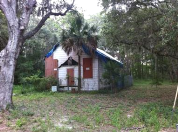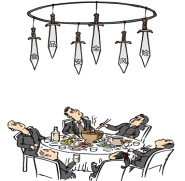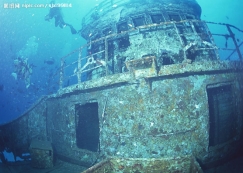
ЎѕМвДїЎїПВНјКЗѧУӢУпНшХѕµДРВФцІї·ЦАёДїЈ¬НшХѕёєФрИЛMr. BlackѕНґЛПтН¬С§ГЗХчСЇТвјыЎЈјЩИзДгКЗАо»ЄЈ¬ЗлДгёщѕЭТФПВМбКѕУГУўУпёшMr. BlackРґТ»·вµзЧУУКјюЎЈ

ЦчТЄДЪИЭ°ьАЁЈє
1. ДгЅЁТйФцјУµДТ»ёцАёДїј°АнУЙЈ¬
2. Дг¶ФУўУпНшХѕµДЅЁТйЎЈ
ЧўТвЈє
1. ґККэ100ЧуУТЈ»
2. їЄН·єНЅбОІјєёшіцЈ¬І»јЖИлЧЬґККэЈ»
3. їЙТФККµ±ФцјУПёЅЪЈ¬ТФК№РРОДБ¬№бЈ»
ІОїјґК»гЈєАёДїcolumn
Dear Mr. Black,
I am glad that there will be some new columns in our English website. _______________________________________________________________________________
_______________________________________________________________________________
_______________________________________________________________________________
_______________________________________________________________________________
_______________________________________________________________________________
_______________________________________________________________________________
_______________________________________________________________________________
_______________________________________________________________________________
_______________________________________________________________________________
_______________________________________________________________________________
Best wishes.
Yours,
Li Hua
Ўѕґр°ёЎї
Dear Mr. Black,
I am glad that there will be some new columns in our English website. Of the four columns, I have higher expectation to TodayЎЇs World. As you know, todayЎЇs world is a changing world. We will become outdated if we turn a deaf ear to it. From the new column TodayЎЇs World we can learn whatЎЇs going on around the world. It can also enrich our knowledge of the latest science and technology.
As to my suggestion, I would appreciate it if there are more English-learning columns in the website. Most of my classmates are eager to learn English well, but short of learning chances after class. I hope our website can do something about it.
Best wishes.
Yours sincerely,
Li Hua
ЎѕЅвОцЎї±ѕОДКфУЪМбёЩАаЧчОДЈ¬ТЄµгТСёшіцЈ¬РґЧчК±І»ТЄЦрѕд·ТлЈ¬їЙККµ±ФцјУПёЅЪТФК№РРОДБ¬№бН¬К±ТЄ°СЛщМбКѕµДµгРґИ«Ј¬УпѕдНЁЛіЈ¬Н¬К±ТЄЧўТвЧјИ·ФЛУГК±М¬ЎўУпМ¬ЎўЙППВОДТвЛјБ¬№бЈ¬·ыєПВЯј№ШПµЎЈёщѕЭѕдТвККµ±К№УГІўБРБ¬ґКЈ¬Н¬К±ТІТЄєПАнФЛУГёЯј¶ґК»гєНёЯј¶ѕдЧУОЄОДХВФцЙ«МнІКЎЈЧўТвЈє1.ґККэ100ЧуУТЈ» 2.їЄН·єНЅбОІјєёшіцЈ¬І»јЖИлЧЬґККэЈ»3.їЙТФККµ±ФцјУПёЅЪЈ¬ТФК№РРОДБ¬№бЎЈ
ЎѕББµгЛµГчЎїѕдЧУЅб№№СПЅчЈ¬ІгґО·ЦГчЈ¬ІјѕЦєПАнЈ¬ОДЦРЗЙГоК№УГёЯј¶ѕдЧУєН¶МѕдЎЈI am glad that there will be some new columns in our English website.ѕдЦРК№УГ±цУпґУѕдЈ»As you know, todayЎЇs world is a changing world. AsТэµјµД·ЗПЮЦЖРФ¶ЁУпґУѕдФЪѕдЦРМеПЦЈ»We will become outdated if we turn a deaf ear to it.МхјюЧґУпґУѕдФЛУГєПАнЈ»TodayЎЇs World we can learn whatЎЇs going on around the world. whatТэµјµД±цУпґУѕдЗЎИзЖд·ЦЈ»As to my suggestion, I would appreciate it if there are more English-learning columns in the website.№М¶Ё¶МУпЎў№М¶ЁѕдКЅНкГАК№УГЎЈ



| Дкј¶ | ёЯЦРїОіМ | Дкј¶ | іхЦРїОіМ |
| ёЯТ» | ёЯТ»Гв·СїОіМНЖјцЈЎ | іхТ» | іхТ»Гв·СїОіМНЖјцЈЎ |
| ёЯ¶ю | ёЯ¶юГв·СїОіМНЖјцЈЎ | іх¶ю | іх¶юГв·СїОіМНЖјцЈЎ |
| ёЯИэ | ёЯИэГв·СїОіМНЖјцЈЎ | іхИэ | іхИэГв·СїОіМНЖјцЈЎ |
їЖДїЈєёЯЦРµШАн АґФґЈє МвРНЈє
ЎѕМвДїЎїДі№¤і§ФмAЎўBРНЧАЧУЈ¬ГїХЕЧАЧУРиДѕ№¤єНЖṤБЅµА№¤РтНкіЙ.ТСЦЄДѕ№¤ЧцТ»ХЕAЎўBРНЧАЧУ·Ц±рРиТЄ1РЎК±єН2РЎК±Ј¬ЖṤУНЖбТ»ХЕAЎўBРНЧАЧУ·Ц±рРиТЄ3РЎК±єН1РЎК±Ј»УЦЦЄДѕ№¤ЎўЖṤÿМ칤Чч·Ц±рІ»µГі¬№э8РЎК±єН9РЎК±Ј¬¶ш№¤і§ФмТ»ХЕAЎўBРНЧАЧУ·Ц±р»сАыИу2З§ФЄєН3З§ФЄЈ¬КФОК№¤і§ГїМмУ¦ЙъІъAЎўBРНЧАЧУёч¶аЙЩХЕЈ¬ІЕДЬК№»сµГµДАыИуЧоґуЈїЧоґуАыИуКЗ¶аЙЩЈї
Ійїґґр°ёєНЅвОц>>
їЖДїЈєёЯЦРµШАн АґФґЈє МвРНЈє
ЎѕМвДїЎї The Harrington School is an old one-room schoolhouse in Georgia. The building has not been used in years. Community leaders and even the local historical society thought it wasnЎЇt worth saving. Ў°Just look at it and you could tell it was going to fall any minute, so letЎЇs tear it down, Ў± they said.
The Harrington School is an old one-room schoolhouse in Georgia. The building has not been used in years. Community leaders and even the local historical society thought it wasnЎЇt worth saving. Ў°Just look at it and you could tell it was going to fall any minute, so letЎЇs tear it down, Ў± they said.
The Harrington School was built in nineteen twenty-five for black children on St. Simons Island. Amy Roberts well remembers she attended first grade there in nineteen fifty-three. That was a year before the United States Supreme Court ruled that schools had to be racially integrated. A number of states kept blacks from attending school with whites. After the ruling, the children joined white students at St. Simons' other elementary school.
The old schoolhouse continued to be used for social activities and a day care center. By 1970, however, it was empty. Amy Roberts worried that developers might tear it down. So she started the African-American Heritage Coalition to try to save it.
Ў°If it's not saved, then eventually you would not know that we existed here on St. Simons. Everything of African-American heritage has been torn downЈ¬Ў± she said.
In 2009 the Harrington School was weeks away from destruction. Then a local historian named Patty Deveau took a closer look. She remembered a movement called the Rosenwald Fund.Georgia historian Jeanne Cyriaque explains, Ў°At the very core of that movement was the involvement of the community, sympathetic whites and philanthropy, merging together to do what today we'd call partnerships.Ў±
Julius Rosenwald was a businessman. In 1915 he donated money to black communities to build their own schools. By the late 20s, the Rosenwald Fund had donated to more than 5,000 educational buildings in 15 states across the South. One-third of rural black children were attending a Rosenwald school.
Ў°This particular school kind of embodies to me what was going on with the communities at the time, because in many African-American communities, it was African-American families that gave land for these schools to be built.Ў± Jeanne Cyriaque said.
Now, preservation architects are developing plans to restore the Harrington School. Amy Roberts and others were surprised by what the experts found about the structure. Ў°They went through it and they talked about how sound it was and how, you know, I mean, they'd never seen anything like this. I mean, it was, like, in great shape!Ў±
What do you learn about the Harrington School?
It only has one room and is going to fall down.
It was built in 1925 and is poor condition now.
It has not been used since 1954.
Though it was built over 85 years ago, it is still in good condition.
Ўѕ1ЎїAccording to the second paragraph, we learn that _______.
the Harrington School was ruled by the United States Supreme Court
the Harrington School used to be a white school mixed with blacks
black children went to separate school before the ruling
the Harrington School was forbidden to be used for racial reasons
Ўѕ2ЎїThe meaning of the underlined word Ў°integratedЎ± is similar to _______.
mixed
completed
seperated
destroyed
Ўѕ3ЎїAmy Roberts is anything but _______.
a black woman
an African-American
a clerk who used to work in the African-American Heritage Coalition
a woman in her sixties
Ўѕ4ЎїWhich of the following titles do you think would attract the readers most?
A school with a Long History
Saving a School, and Its History
Saving the African-American Heritage
The Harrington School, an African-American Heritage
Ійїґґр°ёєНЅвОц>>
їЖДїЈєёЯЦРµШАн АґФґЈє МвРНЈє
ЎѕМвДїЎїПВГжКЗДі»ъ№№ИЛІЕХРЖёГжКФБчіМНјЈ¬ЗлУГјтЅаµДОДЧЦЅ«БчіМ±нКціцАґЈ¬І»і¬№э75ЧЦЎЈ

ґрЈє________________________________________________________________________
________________________________________________________________________
Ійїґґр°ёєНЅвОц>>
їЖДїЈєёЯЦРµШАн АґФґЈє МвРНЈє
ЎѕМвДїЎїЗлёщѕЭВю»ДЪИЭЈ¬»ШґрПВГжОКМвЎЈ

ЈЁ1Ј©ёшХв·щВю»ИЎТ»ёцєПККµД±кМвЎЈЈЁІ»і¬№э6ёцЧЦЈ¬І»ДЬТФЎ°КіЖ·°ІИ«·зПХЎ±ОЄМвЈ©
ЈЁ2Ј©ЅбєПВю»ФўТвЈ¬МбіцДгµДЅЁТйЎЈ
ґрЈє________________________________________________________________________
________________________________________________________________________
Ійїґґр°ёєНЅвОц>>
їЖДїЈєёЯЦРµШАн АґФґЈє МвРНЈє
ЎѕМвДїЎїФД¶БАнЅвЎЈ
ФД¶БПВБР¶МОДЈ¬ґУГїМвЛщёшµДЛДёцСЎПоЈЁAЎўBЎўCєНDЈ©ЦРСЎіцЧојССЎПоЎЈ
 Students from Florida International University in Miami walked on water Thursday for a class assignment. To do it, they wore aquatic (Л®ЙПµД) shoes they designed and created.
Students from Florida International University in Miami walked on water Thursday for a class assignment. To do it, they wore aquatic (Л®ЙПµД) shoes they designed and created.
Alex Quinones was the first to make it to the other side of a 175-foot lake on campus in record timeЎЄjust over a minute. Quinones, who wore big boat-like shoes, also won last year and will receive $500.
Students had to wear the aquatic shoes and make it across the lake in order to earn an Ў°AЎ± on the assignment for a special course. Ў°ItЎЇs traditional in a school of architecture to do boats out of cardboard (УІЦЅ°е) for a boat race. I thought our students were a little bit more special than that,Ў± Canaves said. Ў°We decided to do the walk on water event to take it to the next level.Ў±
A total of 79 students competed in the race this year in 41 teams. Only 10 teams failed to cross the lake. Others who fell got back up and made it to the end. The race is open to all students and anyone in the neighborhood. The youngest person to ever took part was a 9-year-old girl who competed in place of her mother, while the oldest was a 67-year-old woman. A large crowd on campus joined Canaves as he cheered on the racers. He shouted encouraging words, but also laughed as some unsteadily made their way to the end.
Ў°A part of this is for them to have more understanding of designing and make it work better,Ў± he said. It is also a lesson in life for the students.
Ў°Anything, including walking on water, is possible, if you do the research, test it and go through the design process seriously.
Ўѕ1ЎїWhat can we learn about Alex Quinones?
A. He finished the race in less than a minute.
B. He won the race with the help of 2 boats.
C. He failed the race last year.
D. He set a new record this year.
Ўѕ2ЎїFor what purpose did the students join in the race?
A. To go across the lake to school.
B. To test their balance on the water.
C. To earn a good grade for a course.
D. To win the prize money of $500.
Ўѕ3ЎїWhat can we learn according to the fourth paragraph?
A. More than 20 teams failed to cross the lake.
B. The students who fell into the water had to quit.
C. The students kept silent when the other racers competed.
D. The youngest competitor competed instead of her mother.
Ўѕ4ЎїAccording to Canaves, this race can help the students ________.
A. understand designing better
B. achieve almost everything
C. work together and unite as one
D. walk on the surface of water
Ійїґґр°ёєНЅвОц>>
їЖДїЈєёЯЦРµШАн АґФґЈє МвРНЈє
ЎѕМвДїЎїДіИЛЙПОз![]() К±Ј¬іЛД¦НРН§ТФФИЛЩ
К±Ј¬іЛД¦НРН§ТФФИЛЩ![]() ґУ
ґУ![]() ёЫіц·ўµЅѕа
ёЫіц·ўµЅѕа![]() µД
µД![]() ёЫИҐЈ¬И»єуіЛЖыіµТФФИЛЩ
ёЫИҐЈ¬И»єуіЛЖыіµТФФИЛЩ![]() ЧФ
ЧФ![]() ёЫПтѕа
ёЫПтѕа![]() µД
µД![]() КРК»ИҐЈ®У¦ёГФЪН¬Т»МмПВОз
КРК»ИҐЈ®У¦ёГФЪН¬Т»МмПВОз![]() ЦБ
ЦБ![]() µгµЅґп
µгµЅґп![]() КРЈ®ЙиіЛЧшЖыіµЎўД¦НРН§ИҐДїµДµШЛщРиТЄµДК±јд·Ц±рКЗ
КРЈ®ЙиіЛЧшЖыіµЎўД¦НРН§ИҐДїµДµШЛщРиТЄµДК±јд·Ц±рКЗ![]() .
.
ЈЁ1Ј©ЧчНј±нКѕВъЧгЙПКцМхјюµД![]() ·¶О§Ј»
·¶О§Ј»
ЈЁ2Ј©Из№ыТСЦЄЛщРиµДѕ·С![]() ЈЁФЄЈ©Ј¬ДЗГґ
ЈЁФЄЈ©Ј¬ДЗГґ![]() ·Ц±рКЗ¶аЙЩК±
·Ц±рКЗ¶аЙЩК±![]() ЧоРЎЈї ґЛК±Ри»Ё·С¶аЙЩФЄЈї
ЧоРЎЈї ґЛК±Ри»Ё·С¶аЙЩФЄЈї
Ійїґґр°ёєНЅвОц>>
їЖДїЈєёЯЦРµШАн АґФґЈє МвРНЈє
ЎѕМвДїЎїФД¶БЎ°ДіКЎИЛїЪіцЙъВКЎўЛАНцВК±д»ЇНјЎ±єНЎ°ИЛїЪДкБдЅб№№±д»ЇНјЎ±Ј¬НкіЙєуГжµДОКМвЎЈ

ґУ±нЦРїґіцёГµШИЛїЪµДМШµгКЗЈєўЩ Ј»ўЪ Ј»ўЫ ЎЈ
Хл¶Ф65ЛкТФЙПИЛїЪ±ИВКІ»¶ПЕКЙэµДЗйїцЈ¬МбіцДгµДЅЁТйЈє _______________________
Ійїґґр°ёєНЅвОц>>
їЖДїЈєёЯЦРµШАн АґФґЈє МвРНЈє
ЎѕМвДїЎїФД¶БАнЅвЎЈ
ФД¶БПВБР¶МОДЈ¬ґУГїМвЛщёшµДЛДёцСЎПо ЈЁA ЎўB ЎўC єН D Ј©ЦРЈ¬СЎіцЧојССЎПоЈ¬ІўФЪМвїЁЙПЅ«ёГПоНїєЪЎЈ

The pillage (ВУ¶б) and destruction of ancient shipwrecks and sunken archaeological sites by treasure hunters seeking gold and other valuables may be illegal under the terms of an international treaty under discussion by UNESCOЎЇs 188 Member States.
"Protecting our underwater heritage is extremely important and increasingly urgent as no site or shipwreck is now out of bounds for treasure hunters. New technologies have made deep-water wrecks easily accessible and these technologies are getting cheaper," warns Lyndel Prott.
According to estimates by commercial salvors (С°±¦ХЯ), there are some three million undiscovered shipwrecks scattered across the worldЎЇs oceans. Even the figures for the known wrecks are impressive. The Northern Shipwrecks Database for example contains 65,000 ship loss records for North America alone from 1500 AD to the present. The Dictionary of Disasters at Sea by Charles Hocking (1969) lists 12,542 sailing ships and war vessels lost between 1824 and 1962.
Then there are sunken cities such as the trading town and pirate stronghold(єЈµБ±¤АЭ) of Port Royal in Jamaica, which disappeared beneath the waves after an earthquake in 1692. Or the remnants of ancient civilisations, such as the Lighthouse of Alexandria in Egypt, and the Neolithic villages being discovered under the Black Sea, which some believe could help explain NoahЎЇs great flood.
These treasures of cultural heritage are under serious threat. Technology now allows extraordinary access to the ocean depths for deermined and well-financed treasure hunters. And the potential rewards are huge. In 1985, American salvor Mel Fisher discovered the wreck of the Seora de Atocha, a Spanish ship that sank off the Florida Keys in 1622 with her cargo of gold, silver and jewellery worth an estimated US $400 million.
An archaeologist can spend ten years or more studying a ship, conserving its objects and publishing its findings. We gain an enormous amount of information and knowledge from this work. With treasure hunters, all of this is lost. This is tragic, for humanity as a whole.
Ўѕ1ЎїWhy is it important and urgent to protect our underwater heritage?
A. Underwater heritage is easily accessible to treasure hunters.
B. Underwater heritage is out of reach of archaeologists.
C. New technology makes protection of underwater heritage easier.
D. There is no law to protect underwater heritage.
Ўѕ2ЎїWhat is the third paragraph mainly about?
A. Shipwrecks discovered by commercial salvors.
B. The main cause of shipwrecks.
C. The history of sunken ships.
D. The figures of shipwrecks around the world.
Ўѕ3ЎїWhat happened to Port Royal in 1692?
A. It was washed away by flood.
B. It was beneath the waves after an earthquake.
C. It was discovered under the Black Sea.
D. It was rebuilt by Noah.
Ўѕ4ЎїWhy is Mel Fisher mentioned in the fifth paragraph?
A. He risked his life in treasure hunting.
B. He was one of the most successful commercial salvors.
C. He made a great discovery of shipwrecks.
D. He had no trouble in finding a shipwreck.
Ійїґґр°ёєНЅвОц>>
°Щ¶ИЦВРЕ - Б·П°ІбБР±н - КФМвБР±н
єю±±КЎ»ҐБЄНшОҐ·ЁєНІ»БјРЕПўѕЩ±ЁЖЅМЁ | НшЙПУРє¦РЕПўѕЩ±ЁЧЁЗш | µзРЕХ©ЖѕЩ±ЁЧЁЗш | ЙжАъК·РйОЮЦчТеУРє¦РЕПўѕЩ±ЁЧЁЗш | ЙжЖуЗЦИЁѕЩ±ЁЧЁЗш
ОҐ·ЁєНІ»БјРЕПўѕЩ±Ёµз»°Јє027-86699610 ѕЩ±ЁУКПдЈє58377363@163.com